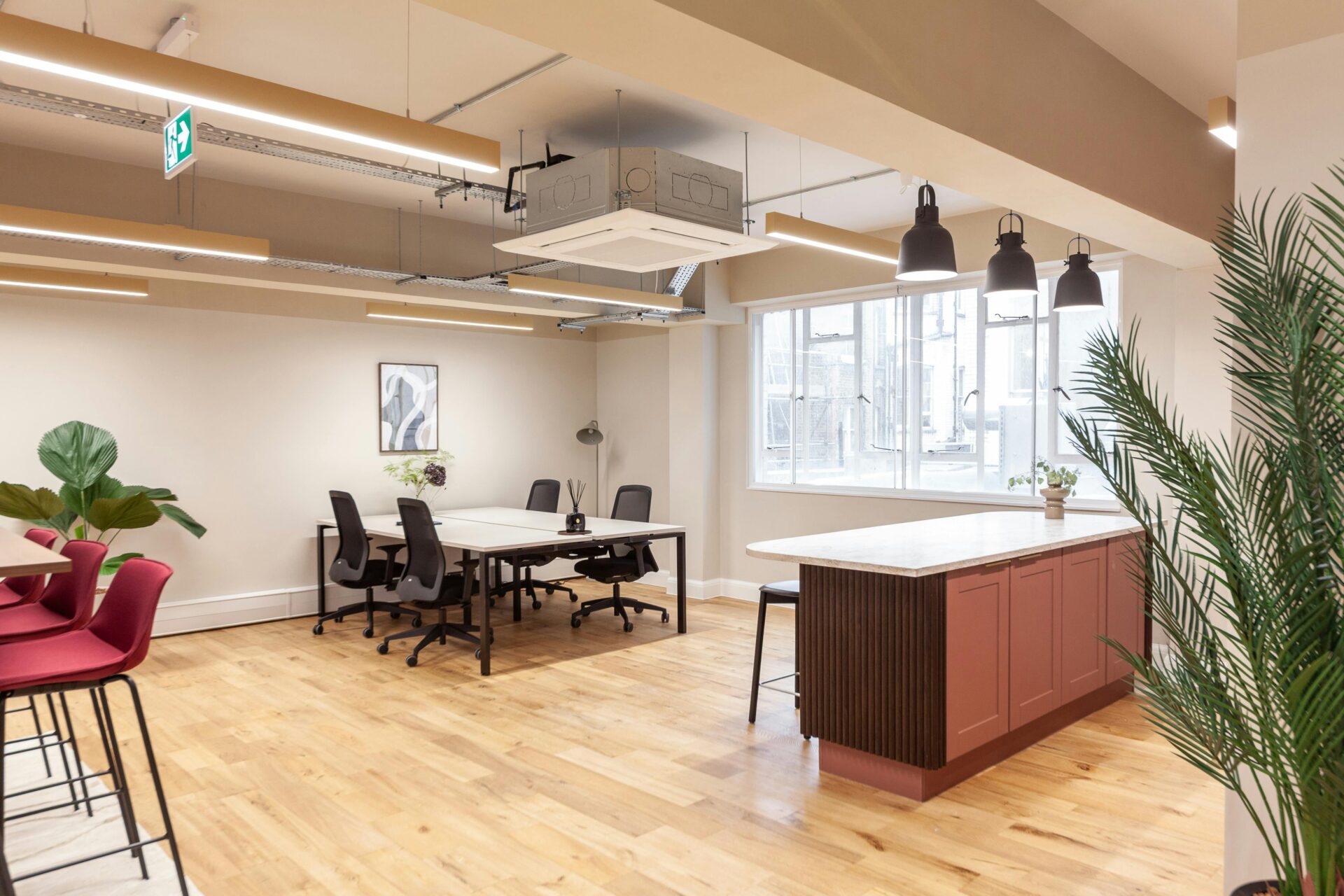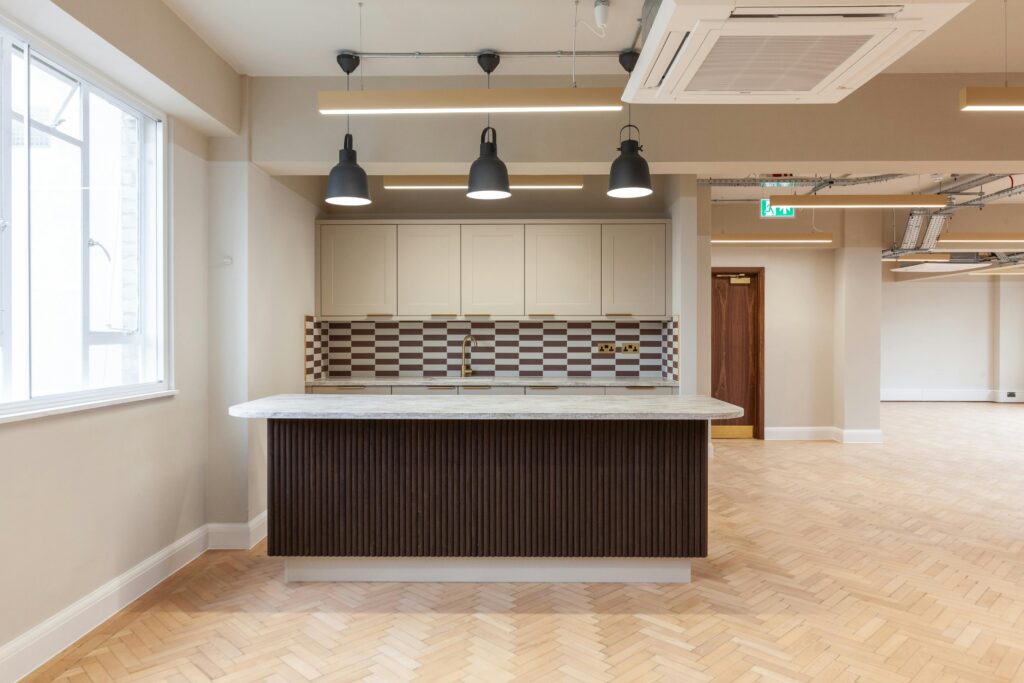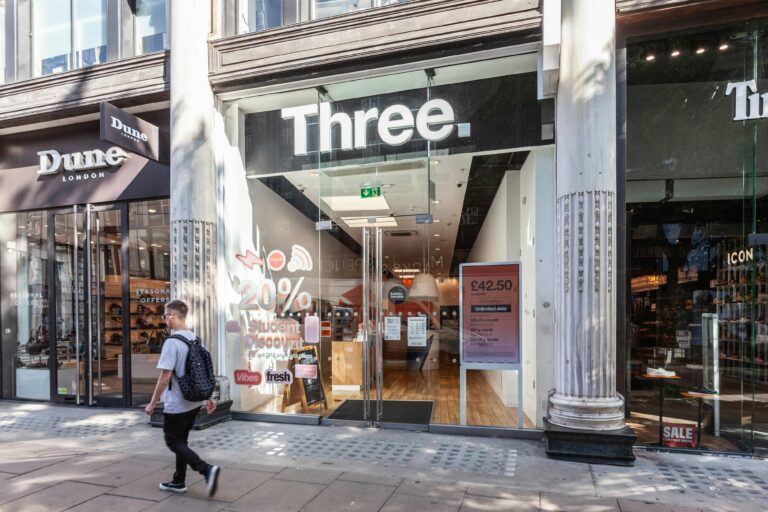A guide for international companies to open UK branches in Central London

Opening a UK branch in London requires navigating legal, tax, and regulatory systems with precision. This guide explains how to open a company in London – from structure choice, compliance steps, visa needs, to selecting the right district. It’s designed for corporate tenants, investors, and developers who want a reliable, data-informed view before making decisions.
First, define your business case (Go/No-go launch)
Before you register your company in London, you must clearly justify the expansion. A well-defined business case helps you allocate resources efficiently, assess risk, and present a credible plan to stakeholders or investors.
The UK Government’s Department for Business and Trade encourages foreign companies to conduct a market assessment before establishing a UK presence. This ensures your plans align with local regulations, taxation, and demand trends.
Consider the following factors when you move your office to London (1):
- Why London: London’s economy remains one of the most diversified and globally connected, offering access to finance, talent, and clients.
- Revenue model: Determine how your UK branch will generate income (direct sales, consulting, distribution, or service delivery).
- Target customers: Define your UK and EU market segments and identify key competitors.
- Hiring needs: Clarify local versus relocated staffing requirements and potential considerations.
- 12–24 month budget: Include incorporation fees, property costs, and compliance expenses.
- Decision goals: Establish clear metrics for market entry success – sales targets, cost limits, and review points for continuation or exit.
A structured Go/No-Go framework helps senior management make data-driven decisions and secures smoother approvals for UK expansion.
Choose presence type: Branch vs. Subsidiary
Before registering your company in the UK, you’ll need to decide how you want to set it up.
There are two main options for international companies:
- A branch, which is part of your existing overseas business (Reference).
- A subsidiary, which is a new UK company owned by your parent company.
The structure you choose will affect how you’re taxed, how much control you have, and how your business is seen by UK partners and banks.
Key considerations
When deciding between a branch or subsidiary, weigh the following factors:
Liability:
- A branch means the overseas parent company is fully liable for UK operations.
- A subsidiary (Ltd) provides limited liability protection, separating UK risks from the parent entity.
Tax & transfer pricing:
- Branch profits are taxable in both jurisdictions, though UK double taxation treaties can prevent being taxed twice.
- Subsidiaries are subject to UK Corporation Tax (currently 25% for most companies).
- Establish clear intercompany agreements to manage transfer pricing risks — as required by HMRC guidelines. (HMRC Transfer Pricing Guidance)
Perception & banking:
- A UK Ltd company is often preferred by local clients, suppliers, and banks.
- Some industries (like finance or law) require a UK-registered entity to sign certain contracts or open corporate accounts.
What to decide before you register
Before you begin, discuss and document these points internally:
- Who will represent the company in the UK?
- How will profits be reported and taxed between countries?
- Will your UK team be hired locally or transferred from your home office?
- Which structure gives your business the flexibility and image it needs?
Once you decide, record the choice in a board resolution and prepare a short tax summary outlining how you’ll handle UK profits and costs
Compliance essentials: Companies House & HMRC
Once you’ve chosen your structure, your next step is to make it officially recognised in the UK.
Two key government bodies will be involved in almost every setup:
- Companies House – where all UK companies and branches are legally registered.
- HM Revenue & Customs (HMRC) – the UK’s tax authority.
Together, they form the foundation of your UK compliance. Registering correctly ensures your business can trade, open a bank account, hire staff, and meet UK tax laws.
Step 1: Register with Companies House
Every new UK company or overseas branch must register with Companies House before trading.
For a branch:
- Register your overseas company as a UK establishment within one month of starting business activity.
- Submit your company’s official documents (for example, the constitution or articles of association).
- Provide a registered UK address for legal correspondence — this can be your new office or your accountant’s address.
For a subsidiary:
- File your company details online through Companies House.
- You’ll receive a Certificate of Incorporation, which proves your company exists legally in the UK.
- Once registered, your company name, directors, and address become public information.
Step 2: Register with HMRC
After Companies House registration, you must notify HMRC that your business is active in the UK.
This registration creates your tax record and allows you to pay the correct taxes.
Here’s what you’ll typically need:
- Corporation Tax registration: All UK companies (and most branches) must register with HMRC within three months of starting to trade.
- VAT registration: Required if your UK sales exceed £90,000 in a 12-month period, or earlier if you want to claim back VAT on expenses.
- PAYE registration: If you’re employing staff, register as an employer to handle income tax and National Insurance.
Step 3: Set up business banking
To operate in the UK, you’ll need a local business bank account. Traditional banks such as HSBC, Barclays, and Lloyds will require:
- Proof of company registration (Companies House certificate).
- Company tax number from HMRC.
- UK business address.
- Identification for all company directors.
If you need a faster option, digital banks like Revolut Business, Starling, or Wise can help you open an account remotely while you wait for full bank approval.
Step 4: Confirm your tax and accounting setup
Once your company and taxes are registered, confirm how your UK operations will handle accounting and financial reporting.
Consider:
- Your accounting reference date (usually the last day of your incorporation month).
- When and how to submit annual accounts and tax returns.
- Whether your company must file transfer pricing or intercompany agreements (for global groups).
You can find all key filing deadlines and guides at GOV.UK: Running a limited company
Securing visas and hiring talents
If you plan to bring staff from overseas or hire locally, your UK business must meet Home Office and HMRC requirements.
If your key team members are relocating, there are two main visa options:
- Skilled worker visa (source): For employees moving to the UK with a confirmed job offer from your UK branch or subsidiary. Your business must hold a Sponsor Licence to issue sponsorship certificates.
- Expansion worker visa (Global business(source) : For senior representatives or managers coming to establish the UK office before local hiring begins.
Before applying, make sure your UK entity is legally registered and that roles meet salary and eligibility requirements under Home Office guidelines.
Hiring employees in the UK: Once your business is set up, you can hire UK-based employees without sponsorship.
Every employer must:
- Provide a written employment contract outlining pay and working terms.
- Register for PAYE with HMRC to manage tax and National Insurance.
- Check each employee’s right to work before hiring.
- Follow UK law on minimum wage, holidays, and equality.

Other essential regulations for setting up in the UK
Before trading, your new UK branch or company must understand the country’s tax and financial rules.
The UK offers a transparent regulatory environment and one of the most competitive corporate tax systems among G7 nations – but compliance is key from day one.
- Double taxation treaties: The UK has double taxation treaties with more than 130 countries, which means your company won’t pay tax twice on the same income. These agreements often reduce or remove UK tax on dividends, royalties, or profits transferred between your UK and overseas entities.
- Budgeting should include not only setup fees and legal costs, but also ongoing tax obligations such as Corporation Tax, VAT, and PAYE. The UK’s corporate tax rate is 25%, and companies investing in innovation may qualify for R&D Tax Credits that reduce overall liability.
Choose your London base for your office
Finding the right London location is just as important as choosing the right business structure. Each district offers its own mix of atmosphere, talent pool, and accessibility. The key is to match your company’s culture and operations with the right environment.
Fitzrovia – Best for creative studios, co-working spaces, and design-led companies
Fitzrovia sits between Soho and Marylebone and offers a balance of creativity and professionalism. The area is home to architects, media firms, and design consultancies, with modern offices inside refurbished period buildings (2). Its central location, walkability, and proximity to Oxford Circus locations make it ideal for global firms seeking a vibrant but less corporate setting (3).
Soho – Best for media, entertainment, and hospitality businesses
Soho has long been London’s cultural and creative core. It’s popular with film studios, marketing agencies, and production companies that benefit from its energetic nightlife and strong networking culture. Office spaces here often combine heritage charm with contemporary design, appealing to brands that value personality and visibility.
Marylebone – Best for boutique offices and wellness-focused firms
Marylebone offers a more residential, calm environment, preferred by healthcare, wellness, and boutique professional firms. The area attracts companies seeking a premium address without the intensity of the West End. Its village atmosphere, elegant architecture, and access to Regent’s Park create a relaxed but professional base.
King’s Cross – Best for tech firms, innovation hubs, and global headquarters
King’s Cross has transformed into a hub for technology, education, and research-led companies. It’s home to Google’s UK headquarters and the Knowledge Quarter — a cluster of tech and science institutions. Its modern infrastructure and international rail links make it attractive for firms with regional or European operations.
The City of London – Best for finance, law, and corporate headquarters
The City remains London’s financial heart, housing global banks, law firms, and asset managers. Businesses here benefit from proximity to major institutions, professional networks, and premium-grade office buildings. Though rents are higher, the City offers prestige and global credibility for established corporate players.

Where to choose your retail shop in London
For retail brands, choosing the right part of London is crucial. The right postcode can influence your customer base, visibility, and long-term brand reputation. Central London offers a mix of luxury, lifestyle, and creative retail districts — each with its own appeal for global retailers.
Fitzrovia – Best for lifestyle brands, art galleries, and concept stores
Fitzrovia is known for its blend of residential charm and creative energy. It attracts independent lifestyle brands, fashion designers, and galleries looking for distinctive retail spaces surrounded by a loyal, design-conscious audience ̣(4). Proximity to Oxford Street and Tottenham Court Road brings strong footfall, while streets like Great Titchfield Street and Margaret Street offer a quieter, boutique setting for premium concepts (5).
Mayfair – Best for luxury boutiques and flagship stores
Mayfair remains London’s luxury epicentre. Global names in fashion, jewellery, and fine art choose this area for its prestige and affluent clientele. Streets like Bond Street, Mount Street, and Savile Row command high rents but offer unmatched brand visibility and heritage value — ideal for flagship stores or brand showrooms targeting international shoppers.
Covent Garden – Best for fashion, theatre, and lifestyle brands
Covent Garden attracts a wide mix of locals, tourists, and professionals. It’s ideal for fashion, accessories, beauty, and lifestyle retailers who value high footfall and characterful architecture. The district’s pedestrian streets and cultural venues make it a strong choice for experiential retail concepts or pop-up stores tied to London’s entertainment scene.
Shoreditch – Best for streetwear, pop-ups, and creative retail concepts
Shoreditch represents London’s trendsetting side – where emerging designers, tech brands, and urban retailers experiment with new ideas. Spaces here range from industrial-style units to pop-up-ready studios. The area’s mix of young professionals and visitors gives brands an authentic, community-driven audience.
Retail location decisions should balance visibility, budget, and brand alignment. For many overseas retailers, Fitzrovia offers a smart middle ground – premium yet approachable, creative but close to Oxford Circus footfall – ideal for building long-term presence in Central London.
“Finding the right space for your UK branch”


Expanding into the UK is an exciting milestone – but choosing the right Central London location is where your success truly begins. Fitzrovia stands out as one of the city’s most versatile destinations – a district where creativity meets commerce.
At The Langham Estate, we’ve spent decades shaping Fitzrovia into a thriving mixed-use environment.
Benefits that our tenants receive:
- Under-10-minute walking distance to Oxford Circus, Tottenham Court Road, and Great Portland Street stations – ideal for staff, clients, and deliveries.
- A central postcode (W1) that adds prestige and visibility to your business address.
- On-site building management and maintenance teams for immediate issue resolution.
- Iconic Fitzrovia architecture – refurbished to Grade A standards.
Whether you’re launching a new UK branch, opening a brand shop, or seeking flexible workspace in Central London, Fitzrovia offers an address that positions your business for long-term success – and The Langham Estate provides the foundation to make it happen.
In this article:
(1) Office moving checklist: Stress-free business relocation guide 2025
(2) Why Fitzrovia’s historic buildings suit creative agencies
(3) How to find ideal office space in Fitzrovia, Central London (2025)
(4) The rise of independent fashion retailers in Fitzrovia
(5) Best shopping streets in Fitzrovia for commercial rentals (2025)